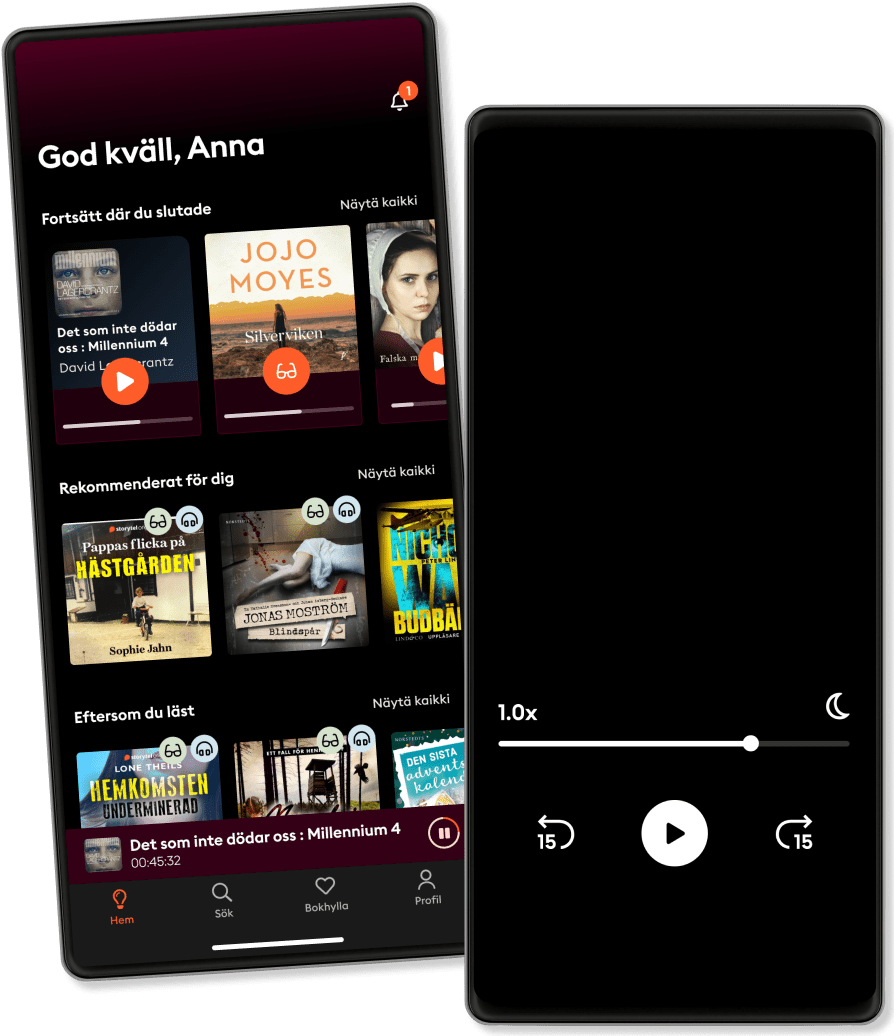Listen and read
Step into an infinite world of stories
- Read and listen as much as you want
- Over 950 000 titles
- Exclusive titles + Storytel Originals
- Easy to cancel anytime

Religion, Space, and the Atlantic World
- Publisher
- Series
1 of 18
- Language
- English
- Format
- Category
Religion & Spirituality
An interdisciplinary exploration of the influence of physical space in the study of religion
While the concept of an Atlantic world has been central to the work of historians for decades, the full implications of that spatial setting for the lives of religious people have received far less attention. In Religion, Space, and the Atlantic World, John Corrigan brings together research from geographers, anthropologists, literature scholars, historians, and religious studies specialists to explore some of the possibilities for and benefits of taking physical space more seriously in the study of religion.
Focusing on four domains that most readily reflect the importance of Atlantic world spaces for the shape and practice of religion (texts, design, distance, and civics), these essays explore subjects as varied as the siting of churches on the Peruvian Camino Real, the evolution of Hispanic cathedrals, Methodist identity in nineteenth-century Canada, and Lutherans in early eighteenth-century America. Such essays illustrate both how the organization of space was driven by religious interests and how religion adapted to spatial ordering and reordering initiated by other cultural authorities.
The case studies include the erasure of Native American sacred spaces by missionaries serving as cartographers, which contributed to a view of North America as a vast expanse of unmarked territory ripe for settlement. Spanish explorers and missionaries reorganized indigenous-built space to impress materially on people the "surveillance power" of Crown and Church. The new environment and culture often transformed old institutions, as in the reconception of the European cloister into a distinctly American space that offered autonomy and solidarity for religious women and served as a point of reference for social stability as convents assumed larger public roles in the outside community. Ultimately even the ocean was reconceptualized as space itself rather than as a connector defined by the land masses that it touched, requiring certain kinds of religious orientations—to both space and time—that differed markedly from those on land.
Collectively the contributors examine the locations and movement of people, ideas, texts, institutions, rituals, power, and status in and through space. They argue that just as the mental organization of our activity in the world and our recall of events have much to do with our experience of space, we should take seriously the degree to which that experience more broadly influences how we make sense of our lives.
© 2017 University of South Carolina Press (Ebook): 9781611177978
Release date
Ebook: 30 November 2017
Others also enjoyed ...
- Bowling Alone: Revised and Updated: The Collapse and Revival of American Community Robert D. Putnam
- Jonathan Edwards's Philosophy of History: The Reenchantment of the World in the Age of Enlightenment Avihu Zakai
- Power and Possession in the Russian Revolution Anne O'Donnell
- Killer in a White Coat: The True Story of New York's Deadliest Pill Pusher and the Team that Brought Him to Justice Charlotte Bismuth
- American Jesuits and the World: How an Embattled Religious Order Made Modern Catholicism Global John T. McGreevy
- Deadly Musings: Violence and Verbal Form in American Fiction Michael Kowalewski
- A World Safe for Commerce: American Foreign Policy from the Revolution to the Rise of China Dale C. Copeland
- The Marginalization of Poetry: Language Writing and Literary History Bob Perelman
- Upward Mobility and the Common Good: Toward a Literary History of the Welfare State Bruce Robbins
- The Man of the Crowd: Edgar Allan Poe and the City Scott Peeples
- Harry Potter and the Philosopher's Stone J.K. Rowling
4.7
- Lights Out: An Into Darkness Novel Navessa Allen
4.5
- Fourth Wing (1 of 2) [Dramatized Adaptation]: The Empyrean 1 Rebecca Yarros
4.7
- Fourth Wing (2 of 2) [Dramatized Adaptation]: The Empyrean 1 Rebecca Yarros
4.8
- Fourth Wing Rebecca Yarros
4.6
- HOW TO WIN FRIENDS & INFLUENCE PEOPLE Dale Carnegie
4.3
- A Court of Thorns and Roses (1 of 2) [Dramatized Adaptation]: A Court of Thorns and Roses 1 Sarah J. Maas
4.3
- Summary of Atomic Habits by James Clear Best Self Audio
4.3
- From Blood and Ash (1 of 2) [Dramatized Adaptation]: Blood and Ash 1 Jennifer L. Armentrout
4.3
- My Weird School Special: Hip, Hip, Hooray! Every Day Is a Holiday! Dan Gutman
4.8
- The 7 Habits On the Go: Timeless Wisdom for a Rapidly Changing World Stephen R. Covey
4
- Yellowface: A Novel R. F. Kuang
4.1
- Becoming Sherlock - The Red Circle Anthony Horowitz
4.4
- Die With Zero: Getting All You Can from Your Money and Your Life Bill Perkins
4.3
- Don't Let The Pigeon Drive The Bus Mo Willems
4.4
Features:
Over 950 000 titles
Kids Mode (child safe environment)
Download books for offline access
Cancel anytime
Unlimited
For those who want to listen and read without limits.
1 account
Unlimited Access
Unlimited listening
Cancel anytime
Unlimited Bi-yearly
For those who want to listen and read without limits.
1 account
Unlimited Access
Unlimited listening
Cancel anytime
Unlimited Yearly
For those who want to listen and read without limits.
1 account
Unlimited Access
Unlimited listening
Cancel anytime
Family
For those who want to share stories with family and friends.
2-3 accounts
Unlimited Access
Unlimited listening
Cancel anytime
2 accounts
S$14.90 /monthEnglish
Singapore